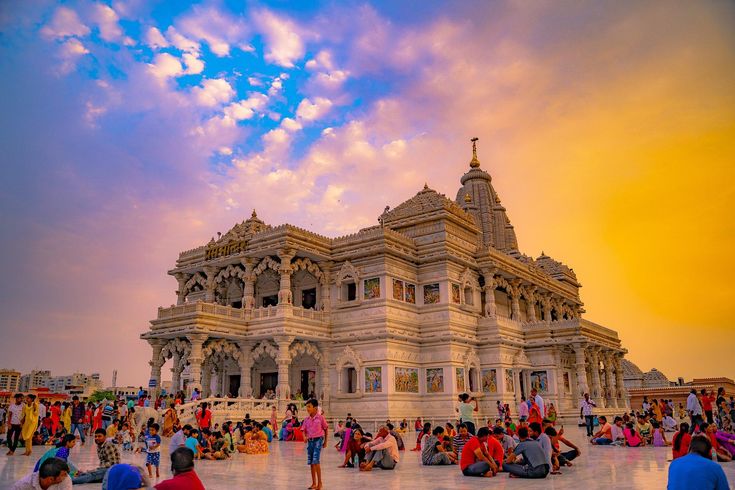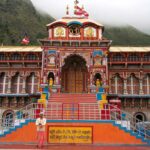Mathura: A Divine Journey Through History, Significance, and Spirituality
Introduction
Nestled in the heart of Uttar Pradesh, Mathura is not just an ancient city but a living testament to India’s rich cultural and spiritual heritage. Known as the birthplace of Lord Krishna, Mathura holds unparalleled significance for millions of devotees and pilgrims from across the globe. From its profound historical connections to its vibrant religious and cultural life, Mathura continues to inspire and guide individuals toward spiritual enlightenment. In this article, we will explore the history, importance, and daily life impacts of Mathura, uncovering the essence of this divine city.
1. The Historic Origins of Mathura
It’s, often referred to as the “Land of Lord Krishna,” is one of the oldest cities in India, with a history dating back over 5,000 years. It finds a prominent mention in ancient texts, including the Mahabharata, Puranas, and Ramayana. The city has been a center of religious significance, attracting devotees and philosophers alike.
Legend has it that Mathura is the birthplace of Lord Krishna, one of the most revered deities in Hinduism, born to Devaki and Vasudeva in a prison cell in the city. This divine connection with Krishna has transformed Mathura into a sacred hub for pilgrimage, drawing millions annually who come to witness the sacred land where Lord Krishna spent his childhood.
2. Spiritual Significance
It’s importance is not confined to its history alone but extends deeply into the spiritual and religious spheres. As the birthplace of Lord Krishna, the city is a pivotal place of worship for Hindus. It is believed that by visiting the sacred temples of Mathura, a devotee can attain moksha (liberation) and purification of the soul.
Mathura is one of the Sapta Puris (seven sacred cities in India), and its association with Krishna is central to the Vaishnavism tradition. The city’s spiritual significance is further heightened by its proximity to other holy sites such as Vrindavan and Gokul, where Lord Krishna is said to have spent his youth performing divine feats and enchanting the world with his wisdom.
3. Daily Life and Rituals
Mathura is a bustling town where spiritual practices and daily life blend seamlessly. The atmosphere is always filled with devotional fervor, and pilgrims can witness continuous prayers, hymns, and chanting throughout the day. The Braj Mandal, which includes the regions of Mathura, Vrindavan, and surrounding areas, is famous for its vibrant religious festivals.
The daily rituals at the Shree Krishna Janmabhoomi temple—the birth place of Lord Krishna—are followed with great devotion. The temple opens early in the morning with the Mangala Aarti, followed by offerings and prayers to Krishna. Devotees often chant the Hare Krishna mantra and participate in various religious activities such as bhajan singing and kirtans.
The Banke Bihari Temple, one of the most popular shrines in Mathura, is known for its lively atmosphere and beautiful rituals, where the idol of Lord Krishna is dressed in vibrant clothes, and the devotees engage in lively chanting and dancing.
4. Impact on Daily Life
The daily life in Mathura is deeply influenced by its rich spiritual culture. The city’s residents live in harmony with the cycles of religious observances. Temples, festivals, and rituals are the cornerstone of life in Mathura, affecting everything from business practices to social relationships.
The city sees a steady flow of pilgrims who engage in parikrama (circumambulation) around the holy places and temples, seeking blessings from the divine. For many, this journey is not just a physical one but a spiritual quest that leads to inner peace and fulfillment.
The teachings of Lord Krishna, such as his message of bhakti (devotion) and karma yoga (selfless action), influence daily life in Mathura. Local traditions and practices echo Krishna’s philosophy, promoting a life centered around love, kindness, and devotion.
5. Festivals and Observances
Mathura comes alive with festivals throughout the year, each offering a unique experience of devotion and community bonding. The most significant festival celebrated in Mathura is Janmashtami, the birth celebration of Lord Krishna. During Janmashtami, the entire city is decorated with lights, flowers, and colorful rangolis, and devotees fast and pray throughout the night in anticipation of the arrival of the divine child. The highlight of the festival is the Dahi Handi event, where people form human pyramids to break pots filled with curd, symbolizing Krishna’s playful nature.
Other notable festivals include Holi, Diwali, and Radha Ashtami, which are celebrated with immense joy and enthusiasm. These festivals not only have religious significance but also bring the community together, strengthening social bonds and promoting a sense of unity.
6. Impact on Society
Mathura holds an important place in Indian society, especially in the context of religion and culture. The city’s role as a religious center influences not only the local population but also people from all over India and the world. It is a hub for religious learning, where scholars and spiritual leaders come to delve deeper into the teachings of the Bhagavad Gita, Srimad Bhagavatam, and other ancient scriptures.
Mathura also plays a significant role in the tourism industry, with millions of pilgrims visiting every year. The city’s economy thrives on tourism, religious events, and the sale of religious artifacts and handicrafts. The influx of devotees creates a vibrant atmosphere and ensures the preservation of the city’s rich cultural heritage.
Furthermore, Mathura’s role in promoting sustainable tourism by encouraging pilgrims to engage in eco-friendly practices adds to its societal significance. The community actively participates in the preservation of sacred sites and the upkeep of temples and pilgrimage routes, ensuring that future generations can continue to benefit from its spiritual blessings.
7. Key Facts
- Location: Mathura is located in Uttar Pradesh, India, about 145 km south of Delhi.
- Important Temples: Some of the prominent temples include Shree Krishna Janmabhoomi, Banke Bihari Temple, and Vishram Ghat.
- Cultural Significance: Mathura is the birthplace of Lord Krishna and is considered one of the holiest cities in India.
- Famous Festivals: Major festivals celebrated in Mathura include Janmashtami, Holi, Diwali, and Radha Ashtami.
- Best Time to Visit: The best time to visit Mathura is during the winter months (October to March), when the weather is more pleasant for travel and exploration.
8. FAQs
- What is the best time to visit?
The ideal time to visit Mathura is during the winter season (October to March), when the temperatures are moderate and perfect for sightseeing and participating in festivals. - How can I reach?
Mathura is well-connected by road and rail. The nearest airport is Agra Airport, about 50 km away. The city also has its own railway station, making it easily accessible from major cities across India. - Are non-Hindus allowed to visit the temples?
Yes, Mathura welcomes people of all faiths. Visitors from different backgrounds can explore the temples, enjoy the vibrant festivals, and experience the spiritual atmosphere. - Is a good place for spiritual retreats?
Yes, Mathura is an ideal destination for those seeking spiritual solace. The city’s serene atmosphere, along with its temples, rituals, and festivals, offers a perfect setting for spiritual retreats and self-reflection.
Conclusion
It’s, with its rich history, divine significance, and spiritual fervor, continues to be a beacon of light for those on a path of devotion and inner peace. Whether you are a pilgrim seeking divine blessings, a history enthusiast, or someone interested in exploring India’s cultural heritage, Mathura offers a transformative experience that resonates deeply with the soul.










